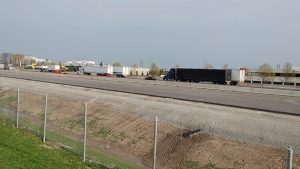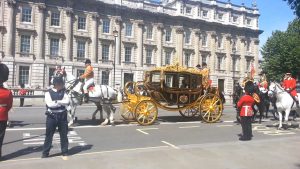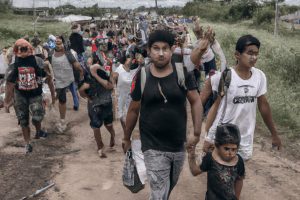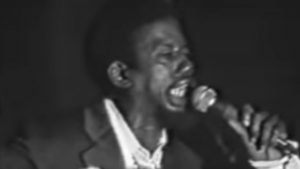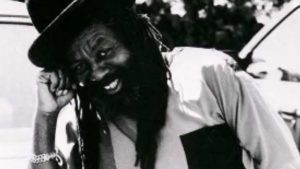What has the Cuban Revolution achieved for the people of the country, the Caribbean and the wider world after 50 years in power? That was the type of question examined by international academics who met May 7-9, at Queen’s University in Kingston, Ontario, but also by the anti-Castro protesters who gathered outside to condemn the proceedings and for many years, the United States State Department, which has overseen the American blockade against the country since Fulgencio Batista lost the support of Washington in 1958.
Contrary to the protesters’ perception, the conference may have attracted some academics who are sympathetic to the Cuban regime but it was no Revolution love fest. There was at least one paper, prepared by a faculty member of the host university, that argued for the maintenance of the US embargo to achieve the aim of bringing liberal democracy to Cuba.
It may be a bit of wry humour to say that with the stereotyping of Cuba as a garrisoned society with studious leadership, the small town of Kingston with its university, military college, armed forces base and several correctional facilities that provide the bulk of the jobs in the area, was an apt location for the conference.
[flashvideo file=https://www.abengnews.com/wp-content/uploads/2009/05/journalist.flv /] Protesters outside the conference wrap up session, May 9.The ‘Measure of a Revolution: Cuba 1959-2009’ conference was jointly organized by the University of North Carolina at Chapel Hill, Havana University, Boston University and Queen’s University.
[flashvideo file=https://www.abengnews.com/wp-content/uploads/2009/05/Cuba_Conf.flv /]Hal Klepak, a conference spokesman, explains the objectives.
One of the difficulties for the outside observer not privy to the 40 presentations and debate of the 300 scholars from North America, the Caribbean, and as far as Turkey and India, is to determine exactly what was being measured. What was Cuba like in the period leading to and during 1950s when the Castro brothers and their comrades first launched their attack and were repulsed by Batista?
It is hard to tell what’s real and what is apocryphal in the history of the time with all the high drama. It starts with the unschooled soldier and labour leader the mulatto Batista leading a sergeants’ revolt to topple the Gerardo Macahdo dictatorship in 1933 and enthroning a series of puppet regimes until he himself comes to power for the first time in 1940. We hear stories of prostitution tied to the touristic activities, said to be run by the mafia, that boomed under Batista; of sugar cane and tobacco workers in near serfdom and poverty.
Enter the charismatic Fidel and Ché Guevara and their comrades on Granma from Mexico in 1956 in what was to be a swift revolt to topple Batista, who had the support of labour unions and the local communists but turns into a two year bush war of dramatic loses and spectacular wins against the army.
Then in late 1958, Dwight Eisenhower having instituted an arms blockade against Cuba, calls Batista to tell him he no longer has his support and the first elected self-described communist in Latin America boards a plane with an entourage for the Dominican Republic before he settles into a life of luxury in Spain where he dies in 1973.
Castro’s men are met with jubilation in Havana on January 1, 1959, but within months hordes of the celebrants are fleeing to the United States. Castro who at first says he is not communist is turned away when he seeks aid in the USA and embraces the Soviet Union which is only too pleased to have a satellite right under the belly of the American beast. As the Revolution seizes private property and nationalizes all businesses, Washington is angry that “American property” is appropriated without proper compensation and extends the arms blockade to trade and eventually to travel.
Castro gains an image as a bearded anti-god devil hell bent on spreading his Marxist atheist murdering revolution to Latin America and the world. Such is the epic of the Revolution in which the Communist Party is immortal.
For the vast majority of Anglophone Caribbean people, this was the image of Cuba gleaned before a post colonial generation of politicians including Michael Manley, Forbes Burnham and others held it up a s model for achieving social justice and superior health, educational and sports achievements.
By the 1970s Cuba was not only building schools and offering doctors as well as medical and other scholarships to like minded governments and parties, its soldiers were shoulder to shoulder with the freedom fighters in the southern African liberation struggles and winning – with Soviet military and other aid said to be valued in the millions per day while the Cold War with the NATO alliance led by the USA dragged on.
Despite the trade embargo, which the USA enforces on third parties, many countries ignored the ban and continued doing business with Havana which instituted a state monopoly on all business activities. Apart from Soviet Ladas, Volkswagen and other models made in places like Brazil and Mexico continued to drive along Cuban roads alongside the pre-revolution American cars which have become classics.
But the stories of the people fleeing Cuba tell of hardships and rationing of food and friends spying on friends on behalf of the Committees for the Defence of the Revolution, the jailing of dissidents and the repression of opposing ideas.
The question arises what exactly we are to measure to judge the success of the Revolution. What was the Revolution overthrowing? Was it opposed to the social and economic conditions and would success be rated against figures in 1958 such as GDP per capita, cars on the road, number of television sets, literacy rates, access to health care or reduction in poverty levels? Would it use as an index the level of repression against civil liberties or would a new agenda use completely new yardsticks that determined progress in building Marxist socialism?
“Including governmental, municipal, and private hospitals and clinics, Cuba had about 35,000 beds for 6.6 million inhabitants-an impressive one bed per every 190 inhabitants,” Kirby Smith and Hugo Llorens wrote in their 2002 comparison of pre and post-Castro Cuba that is often quoted by the US State Department.
They cite a 1957 UN report that Cuba had one of the most literate populations in Latin America since well before the Castro revolution, when its literacy rate ranked fourth in the region. Per capita consumption of calories at 2,730 in 1956 was 2,357 in 1996. Per capita GDP was estimated at US$350 in 1957, placing Cuba fifth out of 20 Latin American countries.
The CIA estimates Cuba’s per capita GDP (PPP) at $9,500 based (GDP $108.2 billion) with debt of $18.25 billion (convertible currency) and another $15-20 billion owed to Russia (31 December 2008 est.). “The government continues to balance the need for economic loosening against a desire for firm political control,” the CIA Web site says. “It has rolled back limited reforms undertaken in the 1990s to increase enterprise efficiency and alleviate serious shortages of food, consumer goods, and services.
“The average Cuban’s standard of living remains at a lower level than before the downturn of the 1990s, which was caused by the loss of Soviet aid and domestic inefficiencies. Since late 2000, Venezuela has been providing oil on preferential terms, and it currently supplies about 100,000 barrels per day of petroleum products. Cuba has been paying for the oil, in part, with the services of Cuban personnel in Venezuela, including some 30,000 medical professionals.”
Cuba and its hemispheric partners led by Venezuela are using creative means to address economic problems and the Bolivarian Initiative was examined at the Queens conference by scholars including Max Azicri, Political Science and Criminal Justice Department, University of Edinboro, Pennsylvania.
“The Cuban socialist government and the Venezuelan Bolivarian regime have established a collaborative and solidarity alliance that has had an impact beyond their borders, reaching regional politics and countries,” write Azicri, abstract of his presentation. “The web of trade and technical service agreements (exchanging strategic commodities like oil and medical services and technical assistance) between Cuba and Venezuela became a model for regional exchanges through the Bolivarian Initiative for the Americas, ALBA.”
Since the 1990s Cuba has also placed emphasis on tourism to increase foreign exchange intake – in a way ironic as Batista’s selling out to casino and tourism interests was an iconoclasm the Castro Revolution.
According to the State Department report “the Cuban leadership’s claim that the country’s food problems are due to the U.S. embargo does not hold up to scrutiny. The food shortages are a function of an inefficient collectivized agricultural system and a scarcity of foreign exchange resulting from Castro’s unwillingness to liberalize Cuba’s economy, diversify its export base, and pay off debts owed to its Japanese, European, and Latin American trading partners during the years of abundant Soviet aid. This foreign exchange shortage, not the U.S. embargo, has severely limited Cuba’s ability to purchase readily-available food supplies from Canada, Latin America, and Europe. We believe that the U.S. embargo has added, at most, relatively small increases in transportation costs by forcing Cuba to import food from non-U.S. sources elsewhere in the hemisphere.”
Melissa Mucci, of the Policy Studies Department, Queen’s University is one of those who believe the embargo should be maintained.
“There are some misconceptions regarding the embargo, as well as misconceptions involving the ‘positive’ steps Raul Castro has initiated,” she wrote, arguing that “the embargo should not be lifted until there are more changes made by Raul Castro’s government. Positive and permanent changes need to be met before the embargo should be lifted. Positive changes need to be effected primarily in the area of human rights.
“Currently, the Cuban government has complete control over the Cuban economy, Cuban culture and religion. The government refuses to free political prisoners, to step down and hold free and fair elections, or to allow the Cuban people the opportunity to travel outside of the island that has been a prison to them since Fidel Castro took power subsequent to the Cuban Revolution in 1959. Changes need to occur in order for the embargo to be reevaluated and possibly lifted.”
The academics looked at a range of topics from literature to film and issues like race and reggaeton that is sweeping Latin America and which with its anti-establishment individualistic style goes counter to the collectivism preached by the government.
With the Barack Obama administration taking a new tack on relations with Havana and Fidel’s successor Raul seeming to embrace reform the issue of regime approval takes on particular interest and this was addressed by
Jonathan Benjamin-Alvarado and Gregory Petrow, Office of Latino and Latin American Studies, University of Nebraska at Omaha in their paper Stability, Transition and Regime Approval in Post-Fidel Cuba.
“Little quantitative analysis has been conducted to ascertain the extent to which the Cuban people approve of the current regime, and the extent to which those attitudes and perceptions will condition or influence the trajectory of stability or transition toward democratic governance in the post-Fidel environment,” they wrote. “Utilizing Cuban public opinion data collected under the auspices of the Gallup World Poll, we estimate a structural equation model to evaluate the possibility of Cuban regime stability and transition.To that end we expect that the high levels of satisfaction with Cuba’s current system of governance, and the on-going policy changes impacting personal liberties, may mitigate the demand for implementing a full transition to democracy.
“Specifically, we test the notion that a Cuban collective identity exists based in the egalitarian values of the Cuban revolution, and that this identity leads to regime support. While we allow that there may be a rise of expectations on behalf of the Cuban people for more changes – it does not necessarily imply a demand for regime change.
‘The policy implications of this analysis are significant. First, it may signal that if the regime possesses both the willingness and capacity to make changes sufficient enough so that it can satisfy and placate the Cuban people, we should expect little change in the system of governance. Second, this will impact both the scope and objectives of U.S. foreign policy vis-à-vis Cuba over the immediate and near term.”
Will the opinions shared with pollsters like Gallup be the measure of where Cubans want the Revolution to go or will the decision be in the hands of folk like the protesters outside the conference in Kingston, Ontario?


About Mark Lee
Mark Lee has been a long-time journalist writing, editing and producing in print, radio television and new media.
